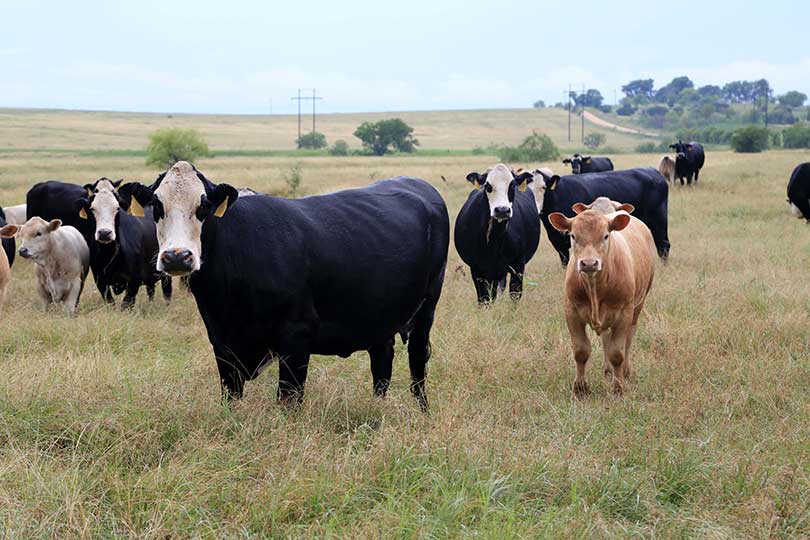By Emmy Powell
Communications Specialist
Drought conditions haven’t yet released their grip on Far West Texas.
The abundant rain that much of the state has received hasn’t made it to Pecos County where Sarah McKenzie raises cattle and grows irrigated alfalfa.
Only a few rain showers have sprinkled across the area.
“We continue to struggle with a persistent drought. We’re in maybe year three of less than four inches of rain cumulative,” she told the Texas Farm Bureau Radio Network. “It is extremely challenging for us. We’re a marginal ranching country in general. This just provides another challenge. We’re a little bit different or unique in that we’re seed stock operators, so we have much invested in our genetics and our strategies have been to just feed more.”
The summer heat brings additional challenges for farmers and ranchers in the area, but McKenzie noted their irrigated alfalfa has helped them get through the dry conditions.
“The farm really is our salvation in some ways. It has a persistent, consistent crop. We have no difficulty marketing high quality alfalfa,” she said. “We sell small bales—three by four bales and then four by four bales. So, we have a source of feed for our own cattle and produce enough to sell, which helps offset some feed costs.”
The most recent USDA Crop Progress and Condition report shows some parts of the state has steady moisture while other parts are in need of rain. About 52% of the current pasture and range conditions are rated at fair to good.
The forage situation is different for Jeff Caspar, a cow-calf producer in McCullouch County.
“The spring was very good to us, especially in April and May,” he said. “In the month of May, we just received an abnormal amount of rain up to 12 inches in the county and with the sunshine and the warm weather, it has really grown the grass.”
Caspar’s hay crop is looking exceptional this year.
His main challenge has been working around rain showers and damage from storms.
“Coastal hay has been growing well. Hay grazer has been growing well,” he said. “The one challenge in a few spots has been some of these severe thunderstorms that have come through. A few of them have had hail and that damaged the hay grazer crops. But overall, hay will to be ample this year.”
Caspar said his stock tanks are full and in great shape for the first time since 2018.
His outlook is positive, but he knows farming and ranching is at the mercy of the weather.
“There’s always challenges,” Caspar said. “It’s really good right now, but you know how Mother Nature can turn on you quickly, and we’re just hoping that this green grass will carry us deep into the summer and get us into the fall.”


Leave A Comment